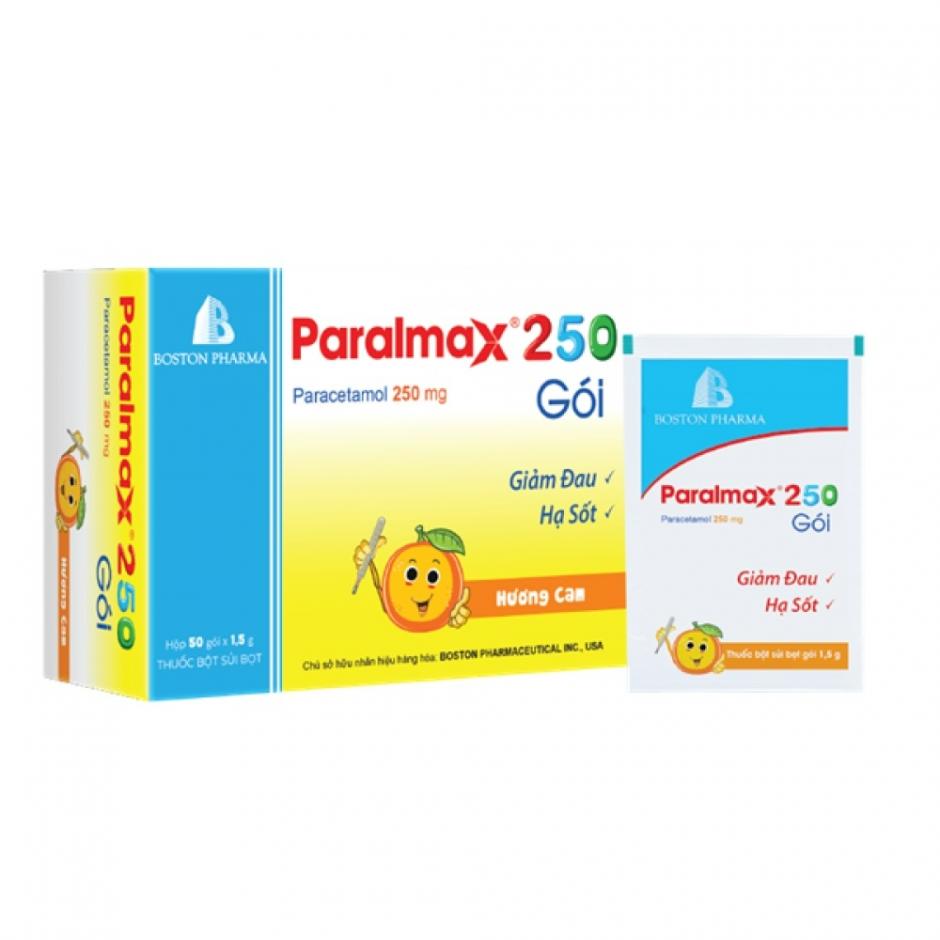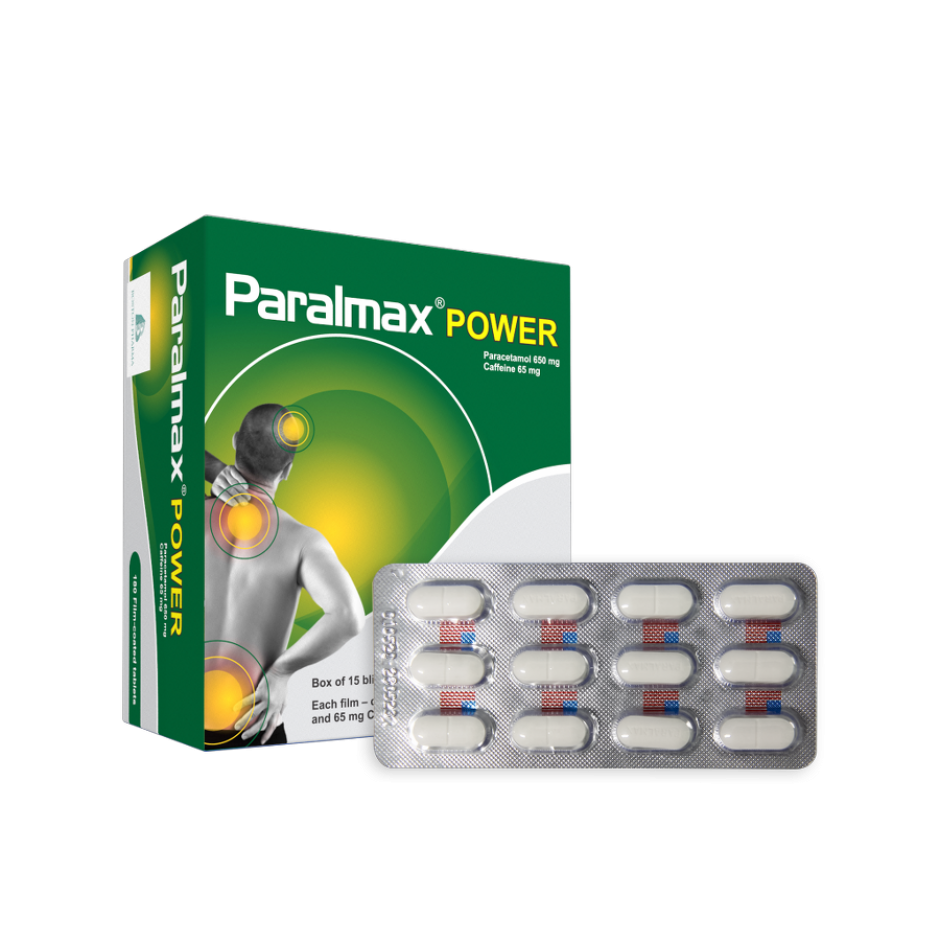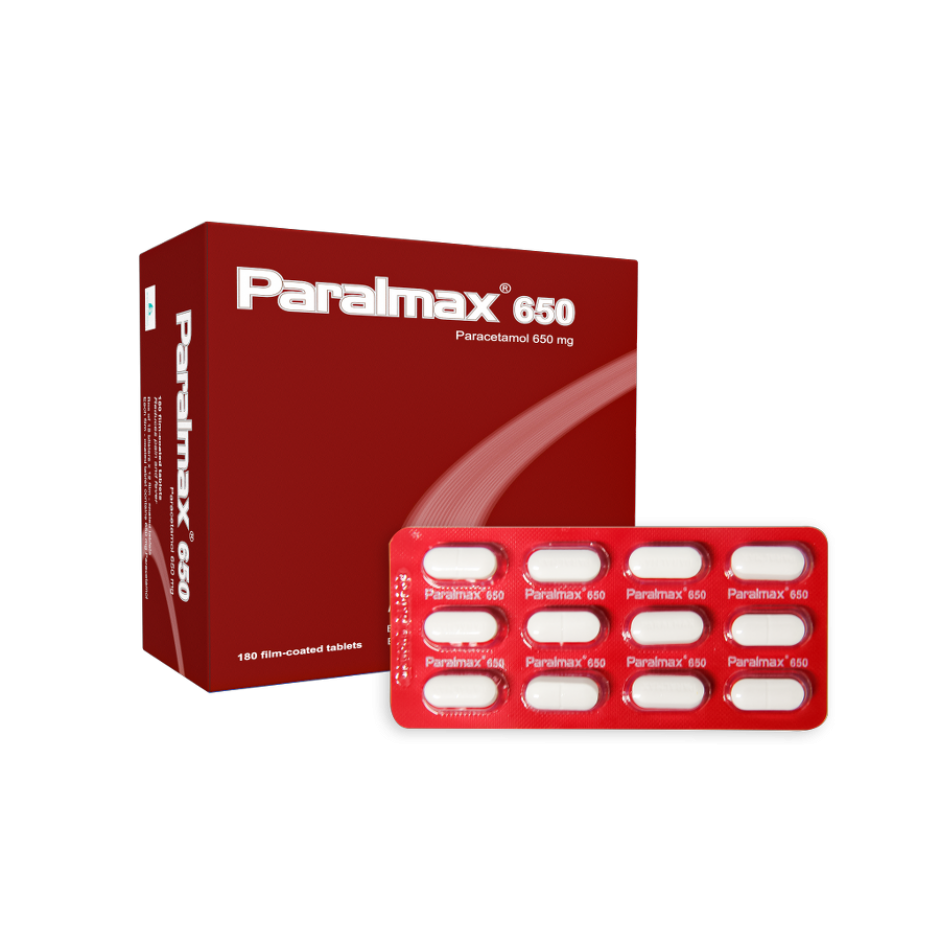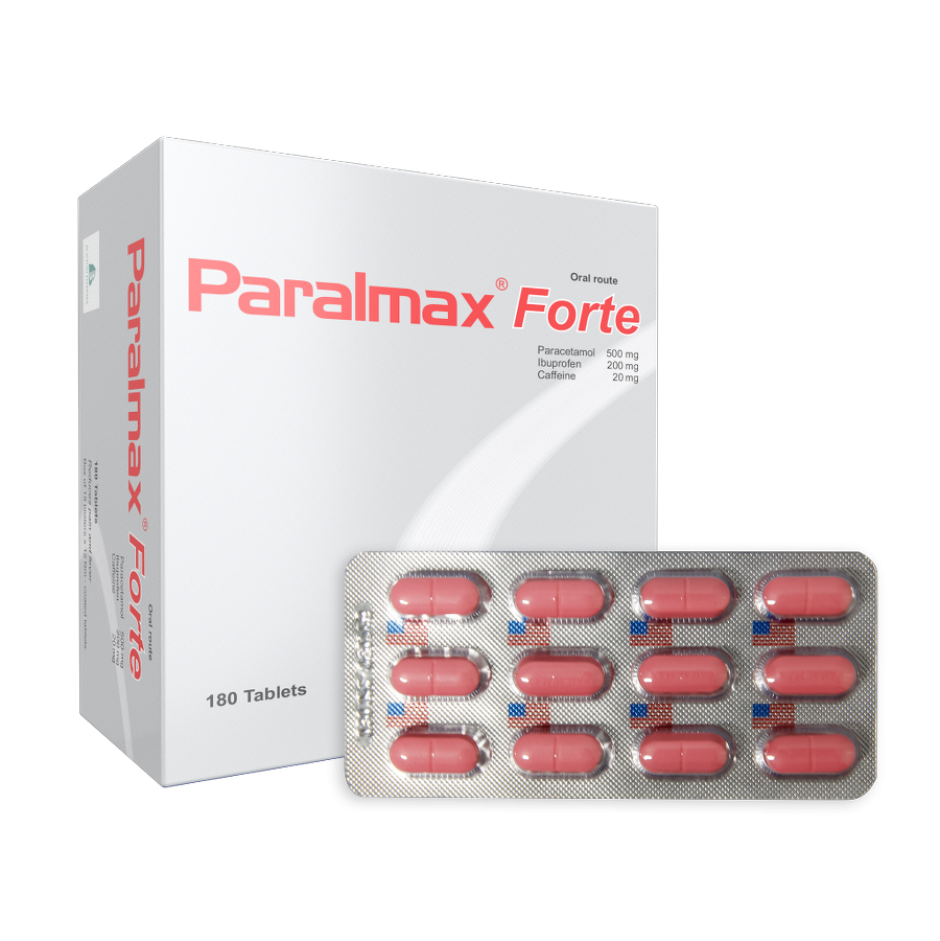ADMINISTRATION AND DOSAGE
Dosage
Dose for adults:
Acute pain: 1 – 2 tablets x 3 times a day.
Chronic pain: 1 tablet x 3 times a day.
Administration
Oral administration.
CONTRAINDICATIONS
In patient with a known hypersensitivity to ibuprofen, paracetamol or any other excipients in the product.
In patient with a history of hypersensitivity reaction (e.g. bronchospasm, angioedema, asthma, urticaria) associated with acetylsalicylic acid (aspirin) or other NSAIDs.
In patient with active or history of recurrent peptic ulcer/haemorrhage.
In patient with servere hepatic failure, servere renal failure or servere heart failure.
In the last three months of pregnancy.
WARNINGS AND PRECAUTIONS
Not recommended for children under 18 years old.
Do not use concomitantly with other NSAIDs or paracetamol containing product without doctor’s approval.
Ibuprofen can cause anaphylactoid reaction. Avoid use this product in patients with aspirin triad (aspirin sensitivity, asthma, nasal polyps) and use with caution in asthma patients.
Some serious skin reaction (e.g., exfoliative dermatitis, Stevens – Johnson syndrome, toxic epidermal necrolysis) may occur without warning. Discontinue at first appearance of rash or any other sign of hypersensitivity (e.g., blister, fever, pruritus).
Ibuprofen can increase risk of cardiovascular events (e.g., myocardial infarction, stroke). Use with caution in patient with cardiovascular diseases or patients with risk factors for cardiovascular events (e.g., hypertension, hyperlipidaemia, diabetes mellitus).
Ibuprofen is a gastrointestinal (GI) irritant. Some serious GI toxicity (e.g., bleeding, ulceration, perforation) can occur with or without warning symptoms. The risk increases in those with a history of GI bleeding or ulceration, geriatric patients, smokers, those with alcohol dependence and those with pour general health. For patients at high risk for complication from NSAID-induced GI ulceration, consider concomitant use of misoprostol or alternatively use of a proton pump inhibitor (e.g., omeprazole) or use of an NSAID that is a selective inhibitor of COX-2 (e.g., celecoxib).
Long-term use of ibuprofen may cause unopposed constriction of renal afferent arterioles, and thus decreases the glomerular perfusion pressure and glomerular filtration rate, which can cause fluid retention, edema or some serious complications (e.g., renal impairment). The risk of renal toxicity increases in patients with renal or hepatic impairment or heart failure, in geriatric patients, in patients with volume depletion and in those receiving a diuretic, ACE (Angiotensin Converting Enzyme) inhibitors or ARB (Angiotensin II Receptor Blocker). These patients should be only treated with this product after carefully consideration; and their renal function also should be monitored.
Long-term use of ibuprofen and paracetamol may inhibit platelet aggregation and prolong bleeding time. Concomitant use with other drugs that also prolong bleeding time should be avoided.
Avoid using alcohol during treatment with this product in order to reduce risk of hepatic toxicity. Discontinue if signs or symptom of liver disease or systemic manifestations (e.g., eosinophilia, rash).
Doctor should warn the patients about the signs of serious skin side-effects such as Stevens-Johnson syndrome (SJS), Toxic Epidermal Necrolysic (TEN) or Lyell’ syndrome, Acute generalized exanthematous pustulosis (AGEP).
PREGNANCY AND LACTATION
Pregnancy
Because of the risk of closure of ductus arteriosus and bleeding in both mother and child during labour, the use of this product should be avoid in the first six months and contraindicated in the last three months of pregnancy.
Lactation
Ibuprofen and its metabolites can pass in very small amount into breast milk. No harmful effects to infant are known. Paracetamol is excreted in breast milk but non in a clinically significant amount.
Therefore it is not necessary to interrupt breastfeeding for short-term treatment with the recommended dose of this product.
SHELF-LIFE
36 months from the manufacturing date. Do not use after the expiry date.



_Paralmax_Pain.jpg)














